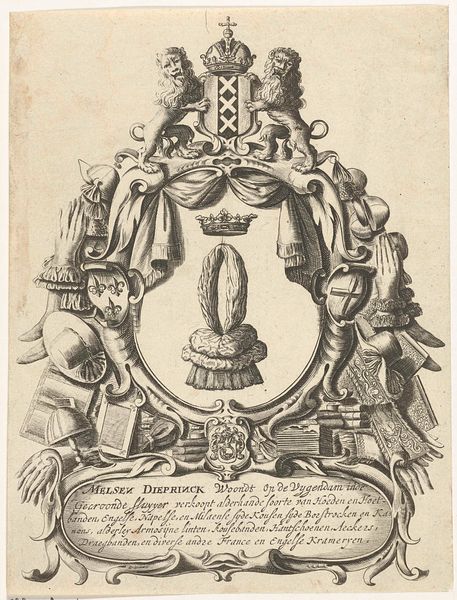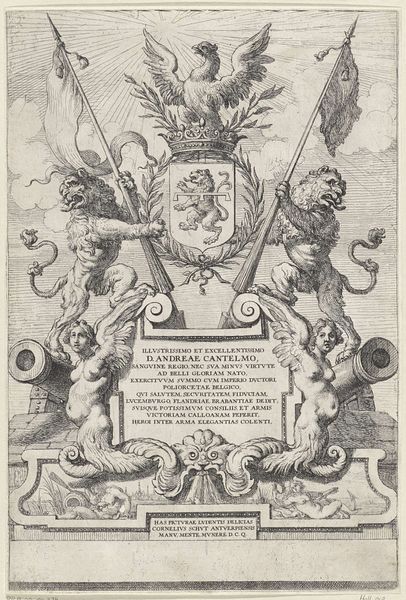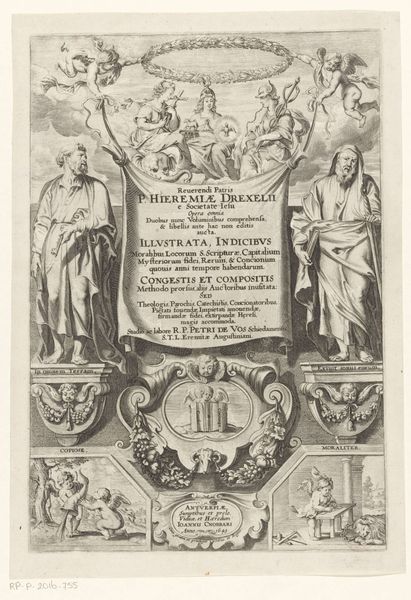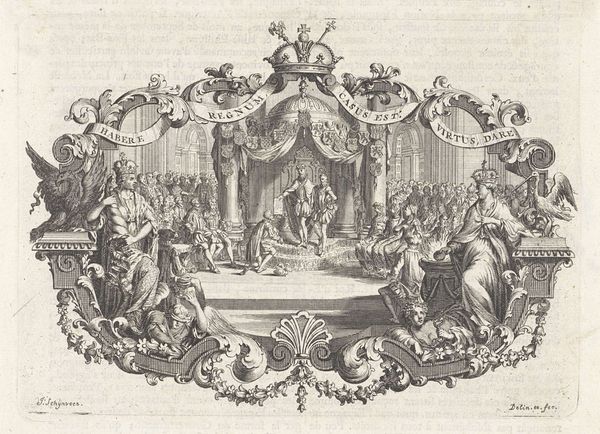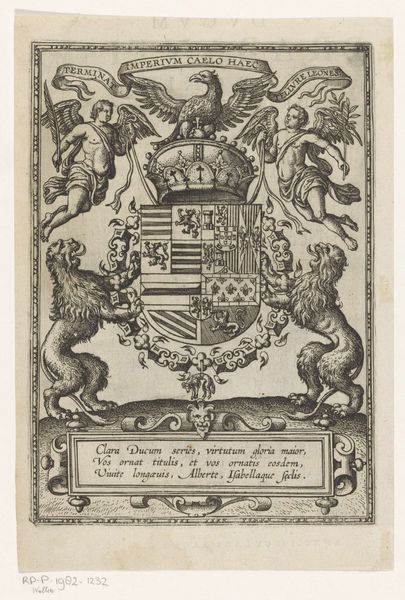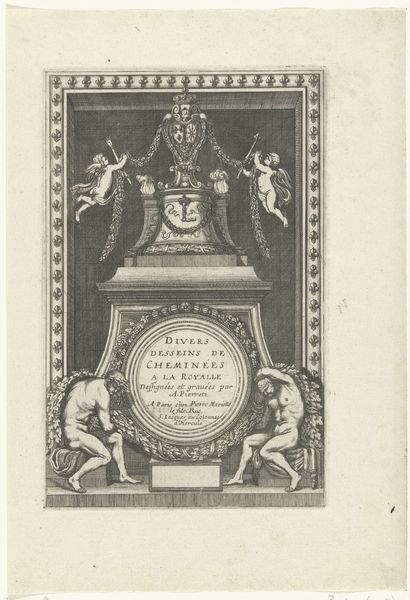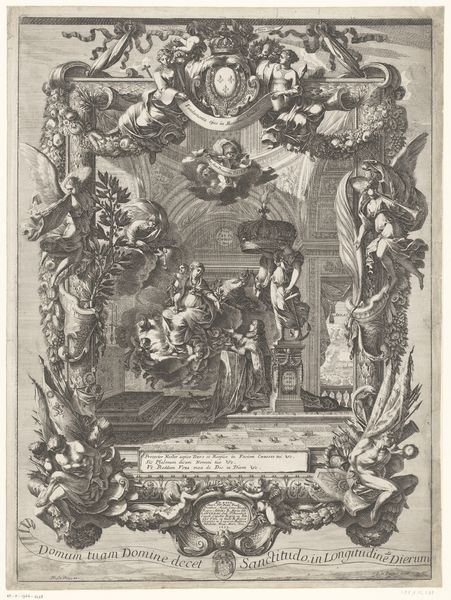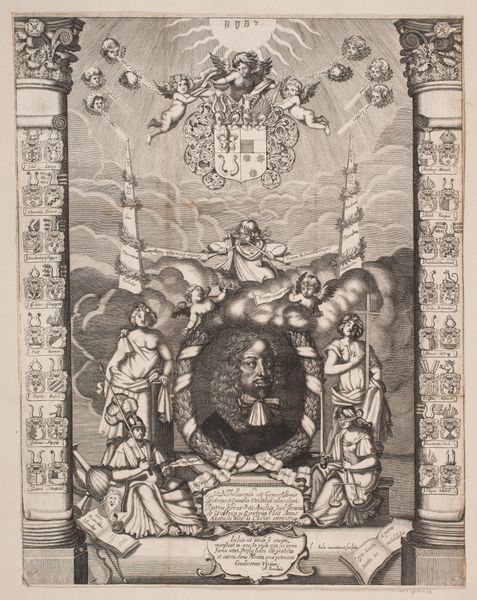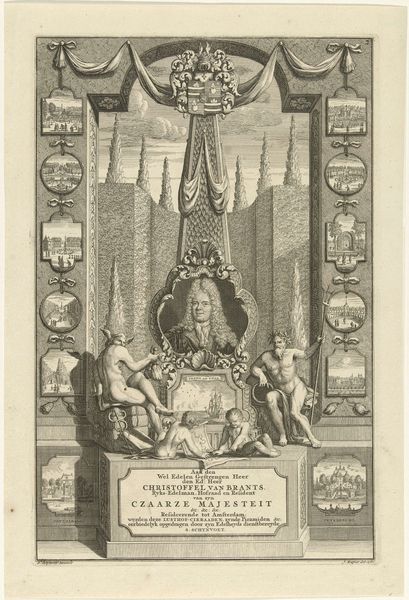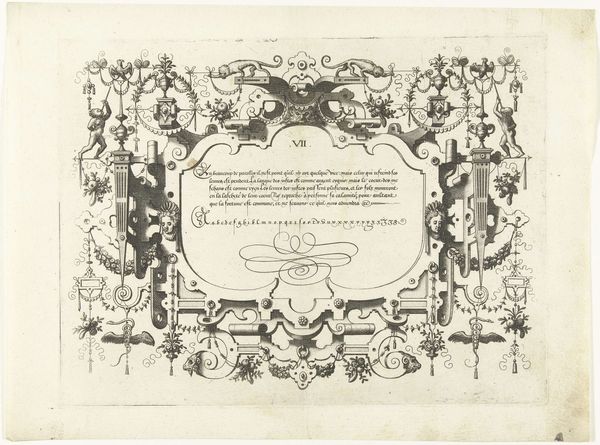
Titelprent van de Actiekraam of het Voorhof van Quinquenpoix, 1720 1697 - 1720
0:00
0:00
pietervandenberge
Rijksmuseum
print, engraving
#
allegory
#
baroque
# print
#
pen sketch
#
cityscape
#
history-painting
#
engraving
Dimensions: height 140 mm, width 100 mm, height 375 mm, width 241 mm
Copyright: Rijks Museum: Open Domain
Curator: This print, “Titelprent van de Actiekraam of het Voorhof van Quinquenpoix, 1720,” by Pieter van den Berge, combines engraving and who knows what else in the printing process, offering us a glimpse into 18th-century material culture and its modes of reproduction. What first strikes me is how this print uses allegory to depict something so tangible as the economic activity of the time. Editor: Yes, it’s incredibly detailed. It seems to be showing a busy marketplace with figures who seem to be going about their trades. How do you interpret this work within its historical and material context? Curator: Consider the labour involved in creating this print. The engraver, van den Berge, wasn't just producing art, but engaging in a form of cultural production tied to economic structures. The print functions as propaganda; It seems to celebrate—but maybe satirize—the financial dealings, given how chaotic the print looks overall, with the image being presented in a way that emphasizes excess. The use of print as a medium here is critical because of its ability to reproduce images rapidly, which helped spread the ideas embedded within it more quickly to a large population. What does the paper itself say to you? Editor: Well, I’m also curious about who it was produced for? Was this for the elites engaging in these actions, or the wider population who needed convincing or satirizing? The text at the bottom looks to me like part of a marketing campaign or at least meant to provoke thought. Curator: Precisely. These prints weren't merely decorative objects; they actively participated in shaping public perception and justifying economic actions of the time. By focusing on materiality, we see this artwork as deeply embedded in a network of production, distribution, and consumption. Editor: So, examining its materials and how it was made gives us insights into social contexts. Curator: Exactly! Materiality isn't neutral; it shapes and is shaped by societal forces. Editor: Fascinating, I will certainly look at prints differently from now on! Curator: Likewise; you helped shed light on the importance of intended audiences and how labor practices impacted both art and commerce.
Comments
No comments
Be the first to comment and join the conversation on the ultimate creative platform.
